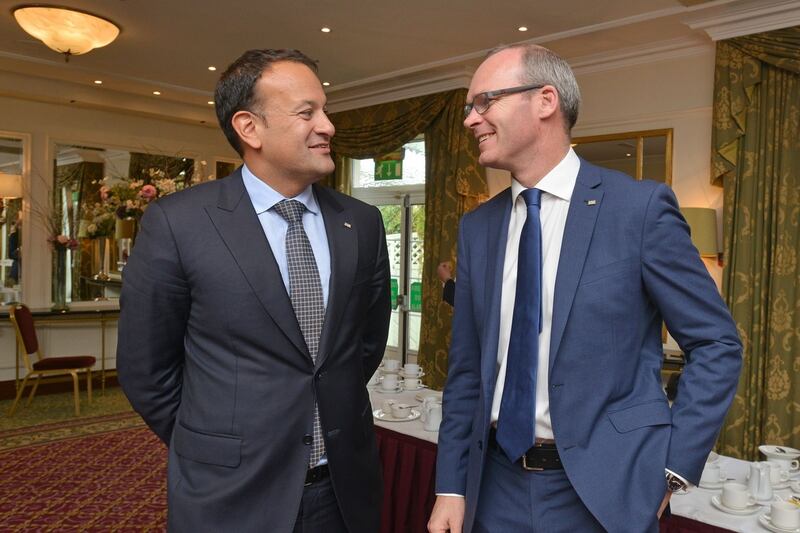This time next week Britain goes to the polls in its second general election in two years and anyone who claims they know be the outcome is lying. It all looked more predictable when Theresa May called the election six weeks ago. Now things appear a lot less clear.
The recent reportage of a winning surge for Jeremy Corbyn's Labour Party has to be viewed with some caution, however. The polls have become very volatile in the last week and there been extraordinary divergences in what the various polling agencies are saying about the current state of public opinion in Britain. All the polls show a narrowing of the large gap which the Conservatives had over Labour a month ago but the pollsters do not agree on the current size of that gap.
Gaps between incumbents and challengers usually narrow in the later weeks of a campaign. Incumbents, after all, will have had the benefit in office of a massive government press operation with which to shape the political agenda. They usually get to choose the precise timing of the election and do so to their advantage. They also usually get to plan and control the initial phase of the campaign. (The mess which Fine Gael made of the opening days of our 2016 election campaign is an exception which proves this rule.)
Broadcasting rules
Once campaigns get into their stride the advantage which incumbents enjoy usually dissipates. Broadcasting rules kick in requiring equal time to be given to both sides. This gives the opposition greater exposure and their policies get greater attention. That works to the opposition’s advantage provided they can withstand the additional attention.
The Conservatives’ campaign in this election was built almost entirely on the presumption that this additional spotlight on Labour and in particular on Corbyn would reinforce the Conservative lead.
From the outset, the Conservatives sought to frame this election as one in which the voters had no option but to re-elect May and her government because Labour is in such a mess and the Labour leader is weird. They set out to ruthlessly exploit and reinforce a perception of Corbyn which they had shaped over the last 18 months, helped by Labour’s Blairite element, the Tory press and the cynical broadcast media who never gave Corbyn a fair hearing.
They recycled decade-old utterances about the IRA and against anti-terrorism legislation to paint Corbyn as unsuitable for office in these times of terrorist threat. This Conservative depiction of the Labour leader as odd and dysfunctional was a classic Lynton Crosby strategy. Crosby is the Australian-born mastermind behind David Cameron’s surprise 2015 election victory.
Crosby and other Conservative campaign managers sought to contrast this depiction of Corbyn with the one which they sought to paint of May. May became prime minister by default and she is a charisma-free zone, so they opted instead to present her as “strong and stable” and as the decisive, competent leader Britain needs to lead Brexit negotiations.
It was always an overblown claim and it has crumbled during the campaign because of May’s weakness in media performances (and in avoiding media outings) and because of a series of dramatic U-turns she has made. She reversed talk on calling the election itself and she reversed the party’s policy on the funding of social care within 24 hours of publishing the party’s election manifesto.
Labour manifesto
The Conservative strategy came unstuck because the Labour manifesto was more centrist, more costed and more popular and because Corbyn, playing off a low base in terms of expectations, proved a more able election leader and media campaigner than the Conservatives and the voters had presumed. He held his own with Jeremy Paxman and the audience in the Channel 4-Sky News leaders event on Monday night and he stood his ground by turning up to the BBC election debate on Wednesday night when May did not.
Corbyn and Labour are clearly the ones with momentum going into the last week but there is little basis for any suggestion that he could win.
Something very strange is going on with the UK polling agencies. Burned by their failure to predict the 2015 election outcome and to foretell the result of the Brexit referendum, they are messing with their weightings. They are each adopting different weightings on turnout, for example, and this seems to explain why they are coming up with different sizes for the Conservative lead.
In its most recent poll ICM put the Conservative lead in the popular vote at 12 per cent whereas the most recent YouGov poll shows their lead as low as 3 per cent. Depending on which pollster you prefer, the spectrum of potential outcomes ranges from a 120-seat Tory majority to a hung parliament.
What was presumed to be a dull British election has suddenly become fascinating.













